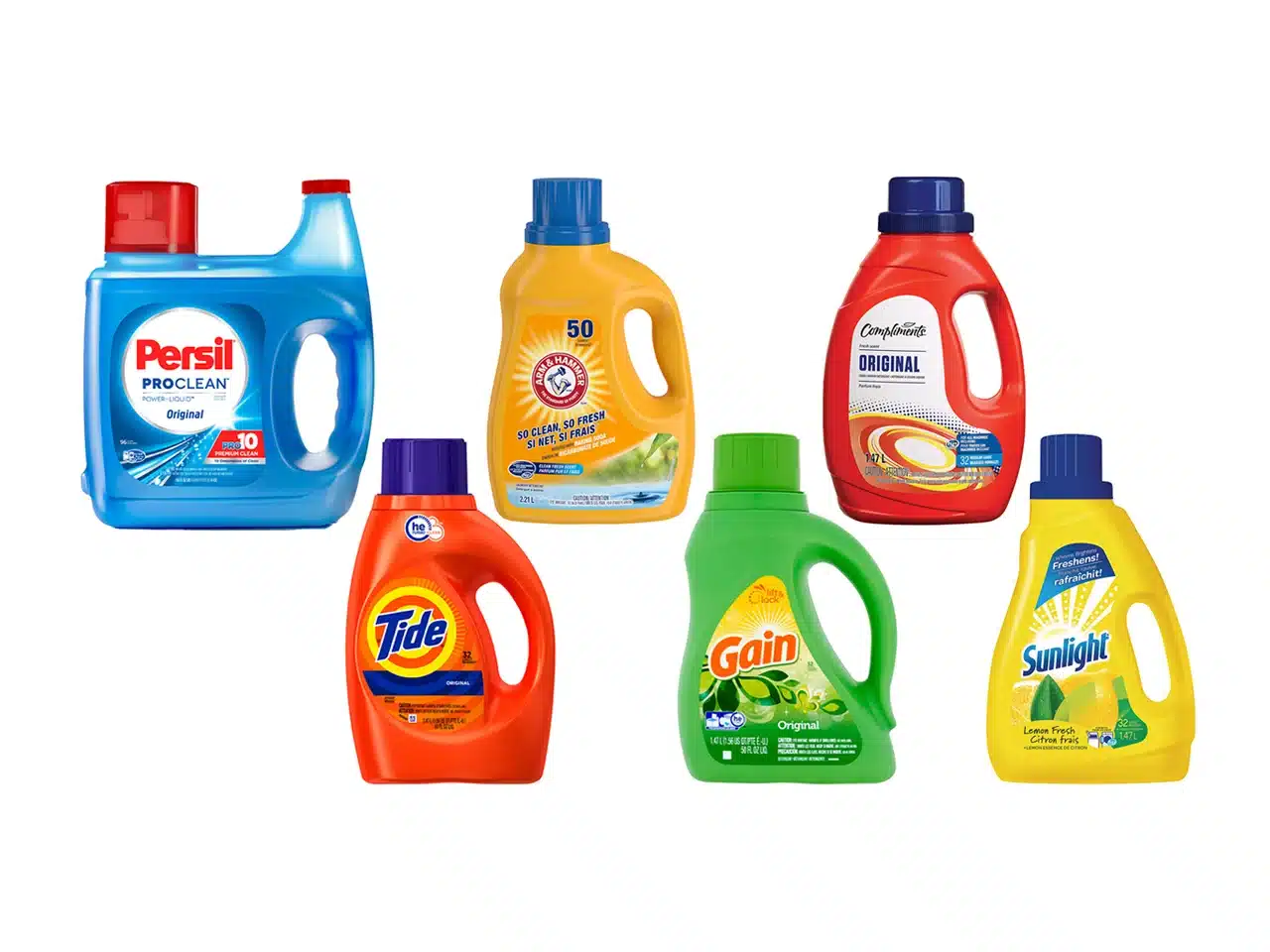Paint typically has an odor that alerts you to the possibility that you are breathing in harmful substances. However, are you aware of how accurate your nasal signals are?
The Consumer Product Safety Commission outlawed lead paint in 1977, but lead paint is not the only paint kind that poses a health risk. (You may recall reading in the news that kids with mental impairments ate lead paint that had chipped off.)
Actually, most paint on the market today contains a number of chemicals called volatile organic compounds that can be harmful to your health if you don’t make an effort to buy paint that is safe for the environment and your family’s health.
VOCs are harmful for a few different reasons. First off, a lot of VOCs are known to cause cancer. Paint buckets are commonly found to contain chemicals, including methylene chloride and benzene, which have been connected to cancer.
Another ingredient in paint that gives you a headache after painting is volatile organic compounds, or VOCs. Additionally, you or a family member may be more susceptible to allergies or asthma in the years to come due to the VOC-rich air in your house.
Given how harmful VOCs are, how dangerous are VOCs in paint? Why are they even present in paint? Are there any better options? Read on to find out more.
Table of contents
- What are Volatile Organic Compounds (VOCs) in Paint?
- What are the Harmful VOCs in Paint to Look Out For?
- What’s “Low VOC” Paint?
- What is The Impact of VOCs On Your Health?
- How Do VOCs Collect Inside Homes?
- Are VOCs in Other Products?
- What are the Effects of VOCs in Paint on Factory Health?
- The Function of VOCs and Alternative Options
- How to Reduce Exposure to VOCs
- Frequently Asked Questions
- Conclusion
- References
- Recommendations
What are Volatile Organic Compounds (VOCs) in Paint?
Chemicals called volatile organic compounds, or VOCs, are present in paints and household cleaning products. VOCs are a common drying agent found in paint.
When paint is applied to a surface and removed from its storage container, volatile organic compounds (VOCs) are released while the paint dries.
These substances can be dangerous for the local surroundings when they are released as gases. The usage of volatile organic compounds (VOCs) in paint and other household items is starting to worry both businesses and consumers.
The ecosystem may be seriously impacted by VOCs as well. VOCs can combine to form hazardous mixes, particularly when they do so with other substances like carbon dioxide or methane.
These mixes have the potential to produce ground-level smog, which can hinder fertilisation, cause plant illnesses, and restrict seed production.
Heatwaves and generally warmer weather can exacerbate photochemical reactions brought on by the climate crisis, which will increase the creation of low-level ozone.
Read this: 10 Best Tools for Painting in 2024 | Best Tools
What are the Harmful VOCs in Paint to Look Out For?
Have you ever observed that some cleaning products have an aftertaste even when the bottle is completely closed? It has to do with VOCs.
VOCs are found in most cleaning solutions, and you can smell them as they release into the air. With paint, the same thing takes place.
Toxic substances do not exist in all VOCs, although many do. It’s critical to know what to look for in order to prevent bringing items into your house or place of business that can contaminate the surroundings and the air inside.
Some of the most popular harmful volatile organic compounds (VOCs) found in paint are as follows:
- Benzene
- Formaldehyde
- Sputum eosinophil
- Ethylbenzene
- Ethylene Glycol
- Methylene chloride
- Toluene
- Xylene
- Hexane
- Styrene
- 1,2,4-Trimethylbenzene
We’ve enumerated the most prevalent volatile organic compounds out of the vast array of them. Make sure you read the label before purchasing paint. Make an educated choice by examining the breakdown of volatile organic compounds (VOCs) included in the materials.
What’s “Low VOC” Paint?
Certain paint brands may carry the claim “Low VOC” on them. Since there isn’t a law specifying what constitutes “low,” this can mean different things depending on the brand.
Depending on the type of paint, the regulations specify the maximum quantity of volatile organic compounds (VOCs) in grammes per litre.
A paint labelled “Low VOC” often indicates that it is below the highest permissible standard. For interior glossy walls and ceilings, for instance, the maximum allowable VOC concentration for water-based paints is 100 g/l.
So, in order for a paint to be classified as “Low VOC,” its VOC content must be less than 8 g/l.
Some paint manufacturers might say “Low VOC” on their label. Since there’s no official definition of “low,” this can indicate several things depending on the brand.
The laws stipulate the maximum amount of volatile organic compounds (VOCs) in grammes per litre of paint, depending on the kind.
It is common for a paint branded “Low VOC” to imply that it is below the maximum allowable threshold. For example, the maximum permitted VOC content for water-based paints on interior glossy walls and ceilings is 100 g/l.
Paints that contain fewer than 8 grammes of volatile organic compounds (VOCs) are designated as “Low VOC.”
To replace this term, they introduced a more accurate description of very low VOC paints “Trace VOCs”.
‘TRACE’ = VOC CONTENT <0.1%
‘MINIMAL’ = VOC CONTENT 0.1 – 0.29%
‘LOW’ = VOC CONTENT 0.30 – 7.99%
‘MEDIUM’ = VOC CONTENT 8 – 24.99%
‘HIGH’ = VOC CONTENT 25 – 50%
‘VERY HIGH’ = VOC CONTENT more than 50%
Also, read this: How Does Electric Toasters Work | Best Working Conditions
What is The Impact of VOCs On Your Health?
As previously discussed, the toxicity levels of various VOCs vary. They also have varying effects on the environment, including the indoor air quality and surroundings of your house or place of business, as well as your health.
In general, breathing volatile organic compounds (VOCs) can irritate the skin, eyes, and throat. It can also result in nausea, migraines, asthma, and breathing difficulties. Certain VOCs have been related to cancer, and their long-term impacts can cause chronic health problems.
Formaldehyde is one of the VOCs most frequently utilised in paint. The level of exposure determines the effect on your health; a higher level of exposure translates into a bigger risk.
Lower exposure (0.1 to 0.5 ppm) results in nasal and ocular discomfort as well as an increased risk of allergies and asthma. Changes in lung function and eczema with a medium exposure (0.6 to 1.9 ppm) have been reported.
Long-term exposure to benzene, another frequent chemical in ordinary paint, can damage bone marrow and reduce the amount of red blood cells in your blood.
How Do VOCs Collect Inside Homes?
There are several ways that volatile organic compounds (VOCs) can gather within dwellings.
Paints and household cleaning products are two main sources of VOC accumulation in houses. VOCs are produced into the air when you paint your house or use cleaning products, and they can build up over time.
Via outdoor air pollution, volatile organic compounds (VOCs) can also find their way into your home. For example, urban residents constantly deal with outside air pollution.
Cities may have higher risk rates due to the high concentrations of volatile organic compounds (VOCs), which are present in things like industrial air pollution and vehicle exhaust fumes.
Check this: How Do Motion-Sensing Lights And Burglar Alarms Work?
Are VOCs in Other Products?
VOCs are found in many other household products besides paint. Thousands of products contain VOCs, including:
- Aerosol sprays
- Stored fuels and automotive products
- Wood preservatives
- Dry-clean clothing
- Moth repellents and air fresheners
- Hobby supplies
Common domestic products, for example, exhibit low levels of VOCs. They include air fresheners, personal care products like hairspray and perfume, and cleaning products.
What are the Effects of VOCs in Paint on Factory Health?
VOCs are potentially extremely toxic substances that can have negative, long-term, or transient impacts.
The effects of volatile organic compounds (VOCs) on your health can range from moderate to severe, frequently based on the quantity and length of the substances you are exposed to.
Shorter-term exposure to high concentrations of volatile organic compounds (VOCs) can cause moderate headaches, nausea, dizziness, and irritation of the nose, eyes, and throat.
Long-term exposure to volatile organic compounds (VOCs), even at low concentrations, may cause symptoms such as:
- chronic inflammation of the nose, eyes, and throat
- Together with loss of coordination and persistent nausea, chronic headaches also
- impairment to the liver, kidneys, and central nervous system
- certain cancerous forms. Though there is evidence that excessive exposure to some VOCs may increase the chance of acquiring cancer, the development of cancer is linked to a mix of causes.
Individuals with pre-existing medical issues, such as those with allergies or asthma, are more vulnerable.
Also, individuals with compromised immune systems and those with illnesses that compromise the immune system are more vulnerable to the long-term consequences of exposure.
Specifically made for paint producers and home cleaning detergent manufacturers, some companies offer eco-friendly substitutes for conventional petroleum-based solvents.
This product is an environmentally beneficial substitute for conventional solvents because it is produced entirely of natural materials and is fully biodegradable.
A solution company has several advantages for paint makers. Compared to many other industrial solvents on the market, it is safer to use because it is non-toxic and non-flammable. Additionally, it smells nice, so after using it, no overbearing or disagreeable smells will remain.
Also, check this: 10 Things You don’t Know About Antiquing
The Function of VOCs and Alternative Options
Paint requires volatile organic compounds (VOCs) to harden the paint. The volatile organic compounds (VOCs) that are generated when paint is applied to a wall with a paintbrush are what cause a wet wall to turn dry.
Having stated that, VOCs aren’t necessary for all paint. Today, paint manufacturers are starting to provide more low- and no-VOC paints due to growing awareness of the documented health risks associated with VOCs.
According to EPA regulations, paint labelled as “no-VOC” must contain five grammes or less of volatile organic compounds (VOCs) per litre of paint. (This only applies to latex paint, which is frequently used for painting in homes.)
Low-VOC paint is defined as having fewer than 250 grams of volatile organic compounds (VOCs) per litre. As with many healthier substitutes, no- and low-VOC paint typically carries a 20–80% premium over standard paint.
As a result, some attempt to make their own paint formulations, occasionally incorporating animal ingredients or chalk. Handmade paints typically have strings attached, which makes application difficult.
For instance, you must take into account factors like the room’s maximum humidity, the number of layers you’ll need, the materials required for the job’s proper completion, and the paint’s longevity. Nevertheless, a few businesses focus only on producing natural paint.
Selecting no- and low-VOC paints is a wise choice if you’re searching for the healthiest substitute for regular paint. Regular paint may be a simpler and more affordable option in areas like garages or storage rooms when the space won’t be used for most of the time.
How to Reduce Exposure to VOCs
Another crucial component in lowering VOC exposure is adequate ventilation. When using VOC-containing materials, like paints, cleansers, and solvents, open windows and use exhaust fans.
To eliminate volatile organic compounds from the air, use air purifiers with activated carbon filters.
Selecting goods with low volatile organic compounds (VOCs) is one of the best strategies.
The use of Vertec Biosolvents’ alternatives to conventional petroleum-based solvents, such as those used in the manufacture of VOC-containing products, can be beneficial.
See also: What’s the Best Type of Adhesive for Vinyl Floors?
Frequently Asked Questions
Generally, a low VOC paint has less than 50 grams of VOC per liter for flat and non-flat sheen.
Volatile Organic Compounds are poisonous and can cause cancer. Moreover, they collide with the gases in the air when emitted, causing environmental damage.
Volatile Organic Compounds tend to dissipate fairly quickly from paint, lasting only 6 months or so after application.
According to experts, a level of 0.3 to 0.5 mg/m3 is safe.
Most Volatile Organic Compounds dissipate very quickly from paint on their own. However, they continue to emit gas slowly for years to come.
Conclusion
Not all low-VOC paints and other environmentally friendly paint substitutes work as well as conventional paints, but the majority do. They may not thin out paint as well, which would make them harder to apply, depending on the solvent they use.
You will need to wait longer between coats because certain alternative solvents are less “volatile” and take longer to dry. Because so many of the darker colours include volatile organic compounds (VOCs), there are also fewer colour alternatives.
Lastly, although the cost of low-VOC paints is typically the same as that of conventional paints, the cost of certain natural paints can be 20–80% more.





